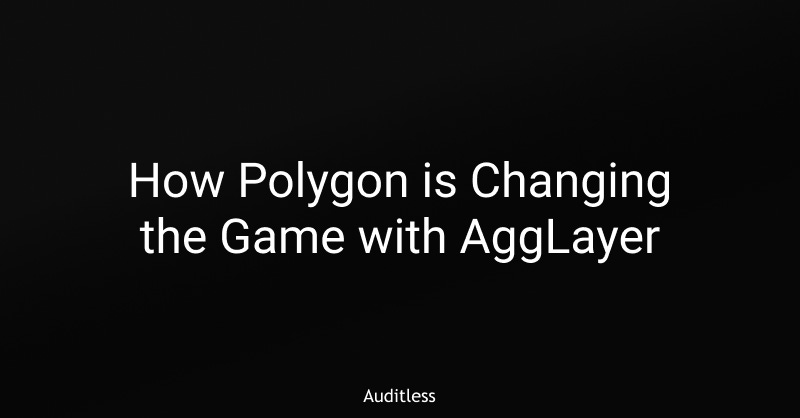How Polygon is Changing the Game with AggLayer
The rollup wars are only just beginning.
I was recently pointed to the Polygon x ApeChain proposal from last October.
On the surface it was a straightforward Superchain vs. CDK bake-off but I was a little surprised to see this:
Polygon seemingly had no aspiration or vehicle to be able to monetize the block space.
Commoditize your complement is a well known stratagem in technology circles, which would suggest that they were attacking the Optimism Collective Contribution that Superchain participants elect to pay.
But in this case it wasn't clear what the complement was at all.
Until last week when they announced AggLayer.
“Devs can connect any L1 or L2 chain to the AggLayer, building a Web3 network that feels like a single chain with unified liquidity and practically unlimited scalability”
AggLayer in a nutshell
Imagine you are building a rollup and want to ensure that users on other rollups can both interact with contracts on your rollup and share liquidity.
Today, the most compelling place to achieve that is by joining the Optimism Superchain.
The Superchain offers a horizontally scalable form of high-grade Ethereum blockspace.
While the Superchain was seeded with OP Mainnet, it now hosts successful rollups like Base and Zora Network.
Due to the immediate and high level of sequencer revenues that these Superchain L2s have earned, the Superchain itself is ushering in a new era of a blockspace gold rush.
Not only do they have runaway network effects, the Superchain is built on a public goods economic fabric that ensures that all OP Collective contributions eventually go towards funding more infrastructure.
This is Dominance at its finest.
How do you compete with a platform that connects you with the largest rollup hub and reinvests your own costs into more contributions that you get to benefit from?
You don't.
Instead Polygon realized that the only thing more customer friendly than charging a small share and allocating it to public goods is to charge nothing at all.
They noticed that the benefits from Superchain on single rollup transactions all come from the open source stack. If that’s all you need, you can run an independent OP Stack rollup like Aevo.
Only shared sequenced cross-chain transactions benefit from cross chain connectivity.
So Polygon figured out a way to charge for that only.
They made a proof aggregation chain that any chain can settle to in order to support cross-chain atomic transactions.
(Note: as always, this is a real-time analysis of the announcement and there has been no confirmation of public strategy from the Polygon team so please take this as speculative at best.)
Now if you join Polygon CDK, you get the following benefits:
Fast and secure cross-chain transactions with other CDK chains
Retain sovereignty (your ability to operate and customize your chain however you wish to).
The magic ingredient to make this all work is that all participating chains need to be validity-proven.
Here’s how it works in more detail:
What’s brilliant about AggLayer
There are many strategic aspects to AggLayer that are noteworthy:
It complements Polygon's strategy to double down on validity-proven chains. A perfect counter-positioning play.
(Likely) roll-ups are only charged for cross-chain transactions that settle on AggLayer so the participation tax is usage based. This moves the Dominance Frontier.
The announcement also introduced a new counter-narrative to modularity called aggregation. Of course, Polygon CDK is still essential as a way to reduce deployment costs so modularity is a high order bit but well played.
It invites non-CDK chains and even L1s to participate despite their configuration and security making switching costs very low.
AggLayer has a strong emphasis on the cross-chain user experience and it’s possible that this play turns one of Polygon's own ZK chains into an aggregator for users.
It’s not clear that this is the winning move from Polygon and there is a lot to flesh out, but it's a very compelling angle of attack in the context of Superchain's current dominance.
It also puts pressure on other parties like shared sequencers and messaging layers. But perhaps the most pressure will be felt by monolithic ZK rollups who will need to figure out how to match the scalability and throughput likely achieved through AggLayer.






